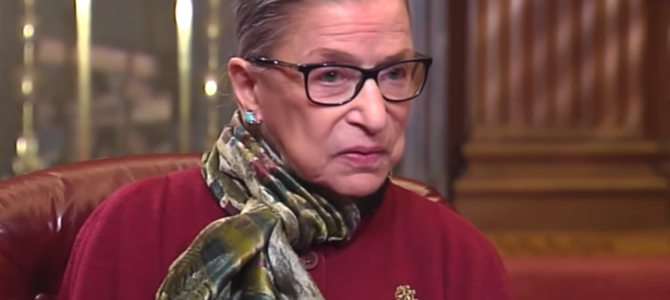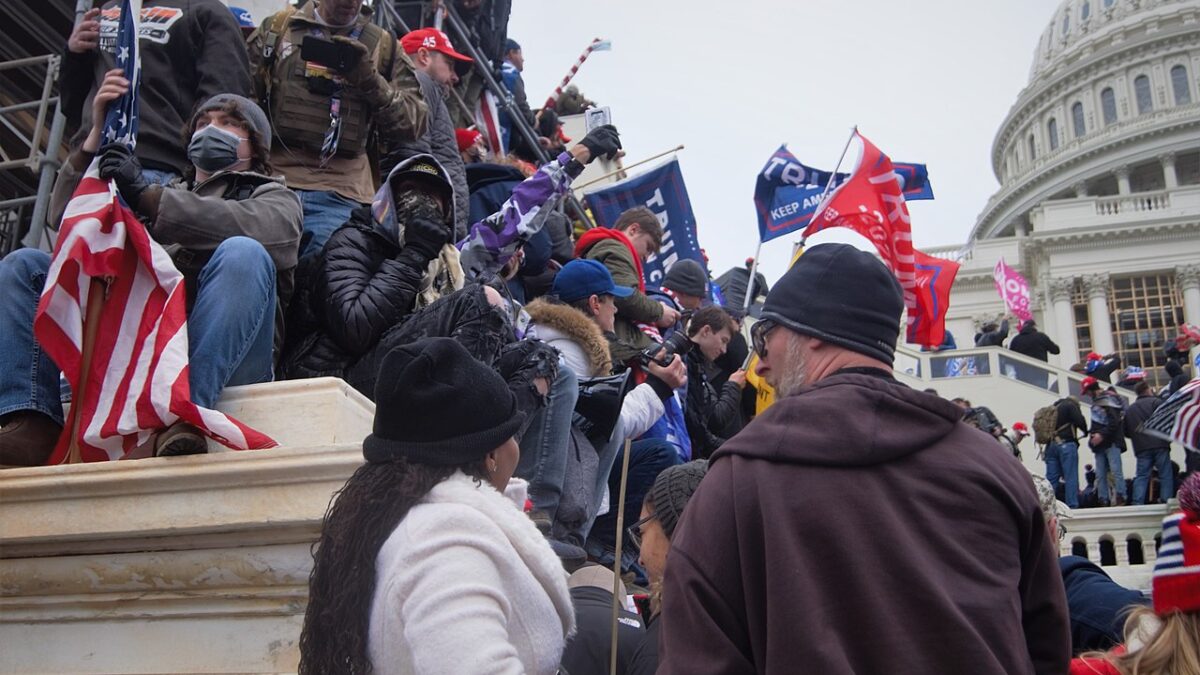
Supreme Court Justice Ruth Bader Ginsburg is a rock star to liberals, who regard her as the living embodiment of feminist empowerment and a commitment to using the courts to rewrite the Constitution to accommodate their big-government agenda. But although they lionize her in hagiographic feature films and made her a popular meme as the #notoriousRBG, it’s not likely many will follow her advice about one of the most popular proposals both Democratic grassroots activists and the party’s presidential candidates are circulating: court packing.
In an interview with NPR’s Nina Totenberg that centered mostly on Ginsburg looking back on her career as well as her battles with cancer, the justice made it clear she took a dim view of Democratic plans to alter the federal judiciary should they reclaim control of the White House and the Senate in 2020.
Ginsburg pointed out that most of the “reforms” proposed by the likes of South Bend, Indiana Mayor Pete Buttigieg and endorsed by other leading Democrats are both impractical and highly unlikely to be adopted no matter which party is in charge in 2021. These reforms include putting term limits on the tenure of Supreme Court and federal appellate judges, as well as changing the manner in which they are selected.
Pushing for Partisanship
Although Buttigieg and rivals such as Kamala Harris, Elizabeth Warren, Kirsten Gillibrand, and Beto O’Rourke who have endorsed such schemes claim they want to make the courts less partisan, Ginsburg sees right through such pretensions. While pointing out that changing the manner in which justices are nominated and confirmed and altering their lifetime tenure will never fly because it would require a constitutional amendment, she also made it clear that changing the way the courts have operated since 1789 would be seen as making them more partisan rather than less so.
Nevertheless, she conceded that the number of Supreme Court justices could be altered, since the Constitution does not state a specific number. The number varied in the republic’s first decades. The passage of the Judiciary Act of 1869 set the number at nine, but another act of Congress could change that.
That’s exactly what President Franklin D. Roosevelt tried to do in 1937 with his infamous court-packing proposal, the purpose of which was to stop conservatives on the Supreme Court from ruling some of his New Deal legislation unconstitutional. Although FDR’s Democratic Party had overwhelming majorities in both the House and the Senate, the public outcry against his brazen attempt to politicize the judiciary caused enough Democrats to abandon him, thwarting his plan.
Given the current conservative majority on the court — and the chance President Donald Trump and the Republican majority in the Senate could add to it should there be a vacancy in the next 16 months — many Democrats have vowed that if they get the power to do so, they won’t wait for one of the five conservative justices to die or retire but will negate their votes by adding enough new seats on the bench.
Court Packing Has Always Been a Bad Idea
But while Ginsburg is unhappy about many of the decisions of her conservative colleagues, she takes a dim view of any notions about court packing: “Nine seems to be a good number. It’s been that way for a long time. I think it was a bad idea when President Franklin Roosevelt tried to pack the court.”
Ginsburg believes the Supreme Court is still essentially a nonpartisan institution, where 5-4 votes are the exception rather than the rule and all of its members cooperate and work well together. Moreover, she thinks any attempt to circumvent normal procedure to render the current 5-4 conservative majority obsolete would undermine the independence of the judiciary and harm its ability to operate.
These observations coming from someone so venerated on the left ought to constrain the enthusiasm of Democrats for court-packing schemes. But Ginsburg, whose anti-Trump credentials were burnished by her critical comments about the president during the 2016 presidential election (which she subsequently conceded were inappropriate), shouldn’t be under the delusion that Democrats are listening to her.
The Cold Logic of Judicial Politics
While the nine justices on the high court may think they are above politics or may vote, as Chief Justice John Roberts has, in a manner they think will keep the judiciary out of the partisan fray, most Republicans and Democrats have a firmer grasp on political reality.
Most observers on both sides of the political aisle see the court as having become an essentially partisan institution that acts as a superlegislature in an era in which gridlock and the growth of the administrative state have sidelined the legislative branch. Control of the Supreme Court and the federal appellate courts is not so much an option as a prerequisite for any chance at political power.
Although Roberts’ diffidence about enforcing constitutional norms is rooted in his desire to preserve the illusion that the courts operate outside the partisan scrum, the days when confirmations will be about legal qualifications rather than party loyalties are long gone. If, as I wrote here, Senate Majority Leader Mitch McConnell has become the conservative movement’s most valuable asset in Washington outside of the White House, it is because he understands the cold logic of judicial politics in the 21st century.
McConnell’s decision to deny Judge Merrick Garland the courtesy of a hearing, let alone a vote in 2016 after President Barack Obama nominated him to take the chair of Justice Antonin Scalia on the Supreme Court, was not a case of a “stolen” seat, nor illegal. But it was unprecedented and based on the calculation that in this day and age, allowing a president to flip a Supreme Court seat from one end of the ideological spectrum to the other was political malpractice.
The same applies to McConnell ending the filibuster rule on Supreme Court nominees and the end of the “blue slip” rule that allowed senators a veto over judicial nominees from their state. On the filibuster, McConnell was merely following in the footsteps of Harry Reid, his Democratic predecessor, who ended the filibuster on lower-court nominations.
The Stakes Are High
Both parties now understand that the stakes involved in control of the judiciary are just too high to play by the gentlemanly rules of a bygone era. If Republicans now understand that defense of constitutional norms and any restraint on liberals’ ability to impose their ideological agenda rests on preserving a conservative high court majority, Democrats have come to similar conclusions.
Democratic presidential candidates are talking about court packing, and not just because it’s the red meat for liberal activists who are bitter about Garland’s defeat and the ability of the GOP to confirm Neil Gorsuch and especially Brett Kavanaugh in the last two years. It’s also because they know their plans for a vast expansion of entitlements and executive power to implement schemes such as “Medicare for All” or a Green New Deal are predicated on their control of the courts.
In this sense, Ginsburg’s advice against court packing isn’t just a throwback to notions of political civility and respect for the rules. It’s also a refusal to let partisan control of the courts determine the nation’s political and legal future.
That’s a lesson Trump, McConnell, and the GOP have already learned. Should leftists win big next year, anyone who thinks the weight of Ginsburg’s opinion or the pull of tradition will restrain Democrats from doing whatever they can to pack the courts hasn’t been paying attention to the political facts of life in 2019.









